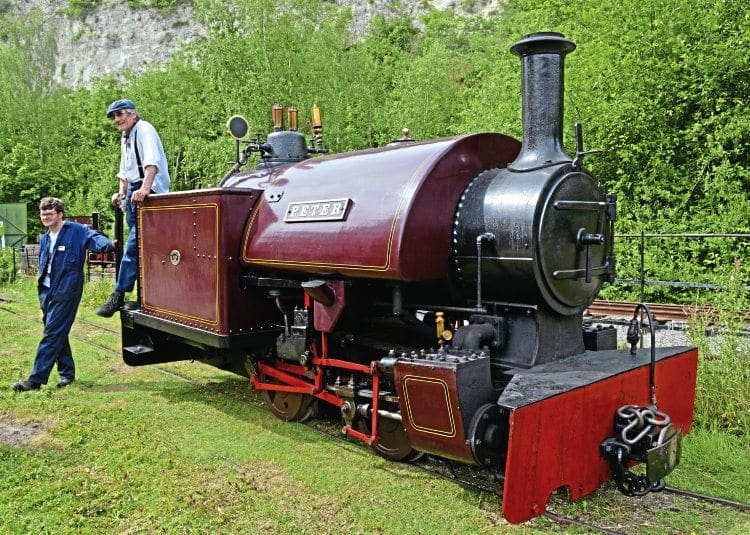
Mark Smithers first visited the Amberley museum in 1987, and returned to the railway for its recent gala to review nearly 30 years of progress.
Following Amberley Museum & Heritage Centre’s summer gala in 1987, I wrote a feature covering what had been achieved during the first five years of railway preservation at this Sussex-based venue. Published in The RM for April 1988 (so nearly three decades later) it seems appropriate to review the changes that have taken place during the intervening period.
Although the history of railway preservation at Amberley may be familiar to many readers, it may be helpful to outline the historical background against which any meaningful assessment of the current state of affairs can be undertaken.
Amberley Museum & Heritage Centre was established in 1979 (then known as Amberley Chalk Pits Museum and Heritage Centre) as a regional museum covering the impact of technology upon the working lives of ordinary people over a period of about 150 years to the present day.
The location was once the chalk quarry and lime kilns of Pepper & Son Ltd, a concern which had its own private standard gauge railway with a connection to the LB&SCR system.
This is known to have possessed three locomotives: two 0-4-0 geared steam locos (an 1878 Marshall of Gainsborough product and Aveling & Porter (No. 4371 of 1899), which were scrapped in 1958, plus a 1953 vintage Hibberd four-wheel diesel, which survived until the closure of the internal railway system, c1962.

Acquisitions
From the beginning of the creation of a railway collection as part of Amberley Museum & Heritage Centre’s appeal, the pattern was set with an emphasis on nominal 2ft as the operational gauge and the first relevant acquisitions were Motor Rail – Hibberd diesel (No. 1980 of 1936) and other equipment of this gauge from Southern Water’s City of Chichester sewage works at Apuldram.
This was shortly to be followed in 1982 by all of the remaining equipment of the same gauge from the locally based Thakeham Tiles Ltd.
The nucleus of the Amberley collection was the inward physical transfer during the summer 1982 of the assets of the Brockham Museum Trust following the failure (owing mainly to local planning issues) of two decades of efforts to establish a permanent narrow gauge railway museum in the Brockham Lime & Hearthstone Co quarry near Betchworth, Surrey.
The equipment concerned was built to a variety of gauges, including the unusual dimension of 3ft 2¼in, and those items formerly owned by the Brockham Trust (as opposed to ‘permanent loan’ items) were legally vested in the trust at Amberley in 1994 when the Brockham Trust was formally dissolved.
Before considering last year’s gala event itself, let’s outline some of the changes to the railway infrastructure that have occurred since 1987.
The most obvious of these is that the operational line, some 500 yards in length, has been extended further into the eastern part of the site to a new terminus, called Cragside, situated next to the ‘new’ Locomotive Shed (completed early 2005) and the museum’s Connected Earth Telecommunications Hall.
This extension was opened on August 26, 2007, and part of its course skirts the railway workshop building and the exhibition and conservation hall, which was partly funded by a grant of £108,000 from the Heritage Lottery Fund and officially opened on May 25, 2004 by Prince Michael of Kent (who had been present at the official opening of the Narrow Gauge and Industrial Railway Collection on June 5, 1984 and returned on April 22, 2008 for the official opening of Cragside station).
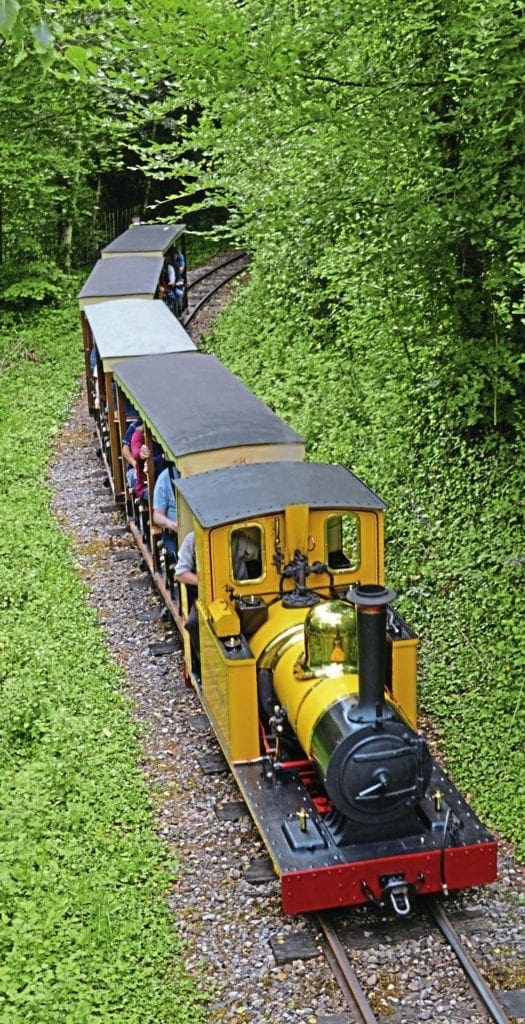
‘Work-in-progress’
At the former terminus of Brockham, platform one now accommodates the
Grade II-listed ticket office which once stood on the north side of Hove Station.
This was formally opened for use in June 2006 and replaced the Brighton Corporation tram shelter, which was transferred to Cragside.
Two further important additions have been made to the railway infrastructure in recent years. The first of these is that there is now a project to re-instate the standard gauge railway in the vicinity of the De Witt Kilns.
This is very much ‘work-in-progress’ and in addition to some wagons, there is only one associated locomotive, former Burt, Bolton and Haywood Timber Co (Erith) Motor Rail diesel Burt (No. 9019 of 1951), for which a new shed has recently been completed, although the locomotive was not operational during the gala weekend.
Nonetheless, the completion of this project offers great promise for future events, such as the possibility of visits from locomotives such as Aveling & Porter Sir Vincent, and
ex-Dorking Greystone Lime Co Baxter from the Bluebell Railway and Head Wrightson 0-4-0VBT No. 1 from Beamish Museum. The second addition is a portable monorail system, of which more later.
As with other railway preservation venues, visiting locomotives have been very much a feature of Amberley galas in previous years and summer 2016 was no exception.
Jeremy Martin’s private Richmond Light Railway in Kent provided two locomotives for the occasion, both of German manufacture, and of the classic Teutonic school of design, incorporating a well tank, high-pitched boiler, inside frames and outside cylinders and valve gear.
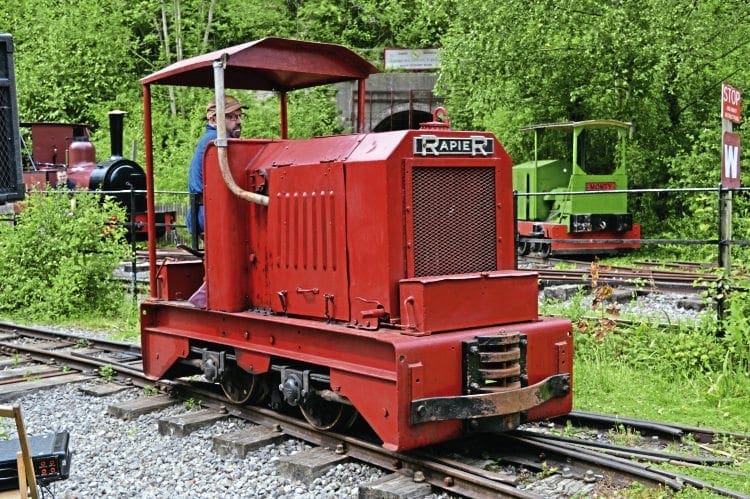
The older of the pair, Susan, was built by Orenstein & Koppel (No. 3136 of 1908) for a sugar beet enterprise in Poland. During its career, the loco received the boiler from a sister engine (No. 11527 of 1925), and following an early preservation career in Belgium, it was first acquired by Jeremy in 2008 and given a thorough overhaul at the Richmond Light Railway’s workshops before returning to working order, acquiring its present name, in 2013.
The other locomotive, Arnold Jung (No. 3175 of 1921), was initially supplied for service in Argentina, being repatriated by Jeremy in 2005 and re-sold to a buyer in Scotland prior to being bought by Joe Nemeth in the latter part of the 2000’s decade, who started restoration work on the engine.
This was completed at the Statfold Barn Railway in 2011 and Jeremy
bought the locomotive again, which now carries the name Jenny, for the RLR in 2012.
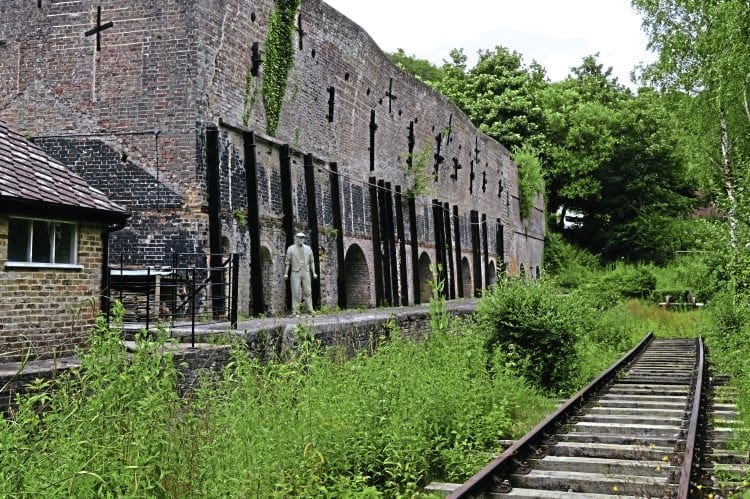
‘Bullhead’ design
On the day of my visit, the two non-resident locomotives were mainly involved in the haulage of demonstration freight workings, but on the following day, Jenny, being fitted with air braking compatible with Amberley’s system, took charge of some passenger workings.
The two working resident steam locomotives are well-known representatives of the Bagnall ‘bullhead’ school of design and both came to Amberley from Brockham in 1982.
Former Groudle Glen Railway 2-4-0T Polar Bear (No. 1781 of 1905) appeared in its 1930’s green livery from its first public steaming in preservation on October 2, 1982 until its 60-year-old boiler after the 1987 summer gala.
Following reboilering in 1992, Polar Bear returned to working order during the following year, painted in its original lined yellow ochre colour scheme and returned to Groudle Glen as an attraction of the 1993 Isle of Man Festival of Transport.
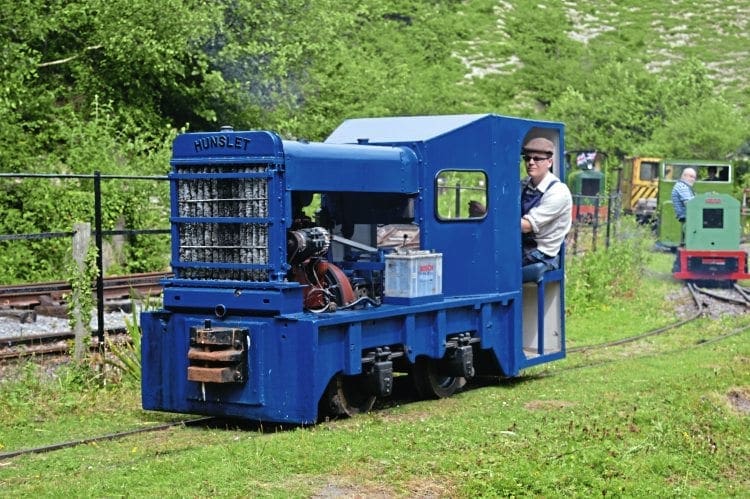

Having made further visits in 1996 and 2005, the locomotive returned to Groudle Glen last summer and took part in a ‘photo call’ with the chassis of partially completed sister locomotive Brown Bear.
During last summer’s gala, Polar Bear’s main function was to haul its four-coach rake of reconstructed Groudle Glen carriages as part of the day’s passenger workings.
The wooded nature of the running line between Amberley and Brockham stations is very reminiscent of much of the Groudle Glen Railway and provides an ideal backdrop for Polar Bear when operating with the type of carriage it was originally intended to haul.
The other resident steam locomotive in operation during the event was Bagnall (No. 2067 of 1918). This engine was originally built to 3ft gauge for use by the Canadian Forestry Commission, but was returned to the makers following the cessation of hostilities and converted to 2ft gauge and bought by Cliffe Hill Granite Co in Leicestershire, where it fell out of use in 1949.
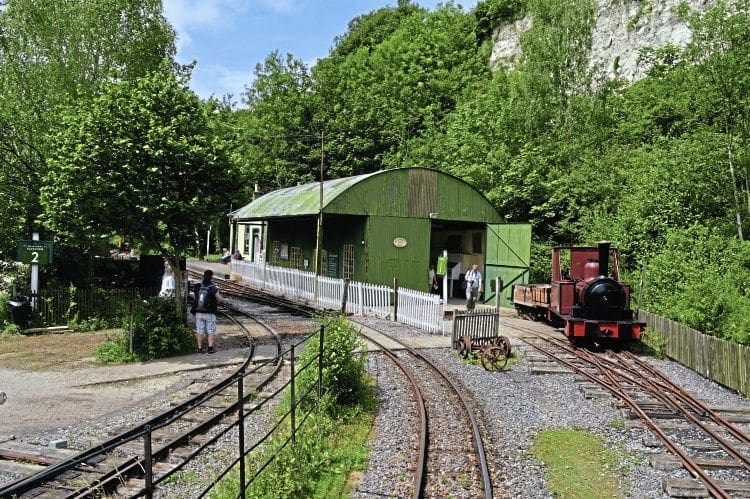
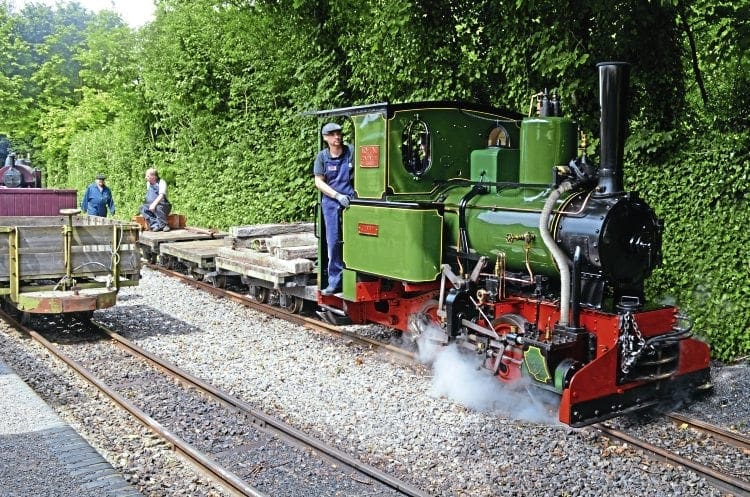
Peter was eventually acquired by the Narrow Gauge Railway Society, and was stored at Brockham Museum, passing to Amberley in 1982, but had to wait until 1993 before its preservation debut in working order.
Following the expiry of its 10-year boiler certificate in 2003, Peter was taken out of service for another overhaul, which was completed in 2009 and included extensive boiler repairs and a repaint in lined Midland Railway crimson livery.
During the gala, Peter was assigned to hauling a passenger rake consisting of the two reconstructed Penrhyn Railway carriages and the ex-RAF Fauld bogie carriage.
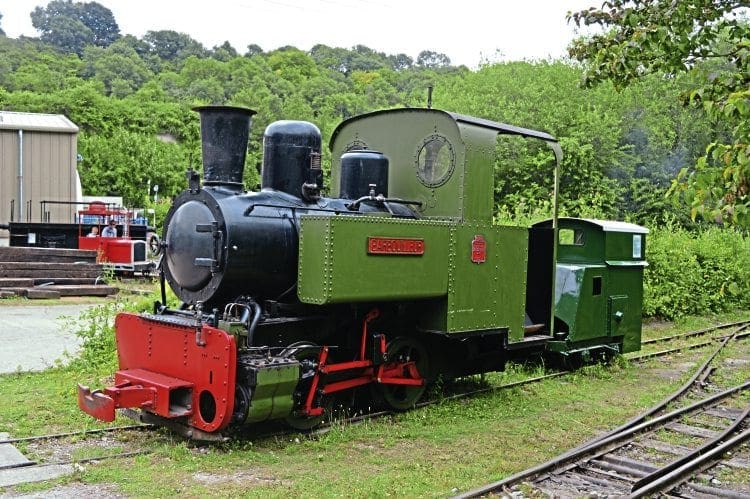
Mention has already been made of the portable monorail system, and this was in evidence during the gala although it was only operational during the second day.
The system in question was developed in 1942 by Noel Green of Aveling Barford Ltd and the rights were acquired in 1946 by Road Machines (Drayton) Ltd, which ceased trading in 1967, whereupon manufacture of the system continued until 1983 by Metalair Ltd of Wokingham.

Double-flanged
Essentially the vehicle consists of a self-propelled ‘V’ skip unit travelling by means of two double-flanged wheels on a monorail and steadied by guide rails and a pair of associated guide wheels for each of the running wheels.
Propulsion was usually by means of a petrol or diesel engine employing hydraulic transmission to each running wheel and the track was normally made up of 12ft straight lengths and 6ft curved lengths of 12ft radius.
The important historical point to note about the Road Machines system is that although it uses proportionately sharper curves (and hence running rail wheelsets which make turning provision), the basic running and guide rail principle is none other than that patented by John Barraclough Fell in 1868 under a specification that envisaged the use of double-boilered steam locomotives (foreshadowing Lartigue) with ‘Heywood’ pattern fireboxes.

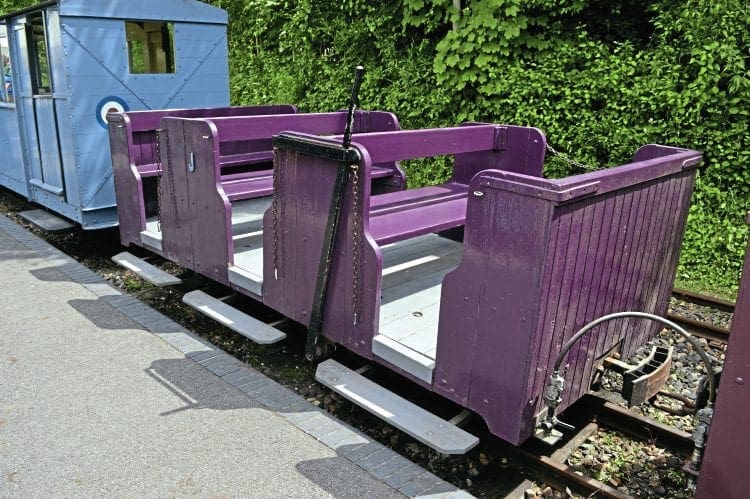
In fact, a steam locomotive has been built to operate on the Road Machines track system elsewhere, but this employs a single conventional locomotive boiler mounted above running rail level.
Other items on static display included ex-Dorking Greystone Lime Co 3ft 2¼in-gauge Fletcher, Jennings 0-4-0T Townsend Hook, back after a visit to the Talyllyn Railway, and showing off the fine cosmetic restoration work that has been undertaken by volunteers during recent years.
An abortive attempt at a cosmetic restoration of the engine was made in the 1990s when it was hoped that much of the work would be carried out by students at Eastleigh Technical College, but this fell through when an engineering skills course was cancelled by the college and the loco’s components had to be retrieved at a cost to the trust.
Another engine very much in evidence was Decauville 0-4-0T Barbouilleur, which proved invaluable as the only operational resident steam locomotive at Amberley between 1987 and 1993, but now awaits essential repairs before it can steam again.
There was also the opportunity to view all three items of essential ‘hardware’ from the Guinness Brewery system in Dublin (locomotive, hoist and 5ft 3in conveyor) as they were on display in the open close to the narrow gauge workshop and exhibition halls.

The cavalcade proved popular with visitors and provided an opportunity to show off many of Amberley’s varied collection of internal combustion locomotives.
The units on parade ranged from a beautifully restored single-cylinder Orenstein & Koppel diesel locomotive Sonia (No. 4013 of 1930) through to such delights as Ransomes & Rapier (No. 80 of 1937), John Fowler & Co 40 HP ‘Resilient’ class locomotive Peldon (No. 21295 of 1936), and James Smith’s ex-RNAD Dean Hill Baguley-Drewry (No. 3751 of 1980).

Over the years, Amberley Railway galas have provided a great source of interest for the enthusiast and casual visitor alike and it is pleasing to note that with so much having been achieved in recent years they will no doubt continue to do so.
The author would like to thank James Smith for his help during the preparation of this feature.
The Railway Magazine Archive
Access to The Railway Magazine digital archive online, on your computer, tablet, and smartphone. The archive is now complete – with 123 years of back issues available, that’s 140,000 pages of your favourite rail news magazine.
The archive is available to subscribers of The Railway Magazine, and can be purchased as an add-on for just £24 per year. Existing subscribers should click the Add Archive button above, or call 01507 529529 – you will need your subscription details to hand. Follow @railwayarchive on Twitter.


